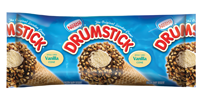Nestle Drives Better Demand
 For Nestle Direct Store Delivery (NDSD), pizza and ice cream are seasonal and promotion-driven, and variety has exploded in recent years. With so much variety, shelf space is at a premium, making it critical for producers to ship the right amount of product to the right store at the right time.
For Nestle Direct Store Delivery (NDSD), pizza and ice cream are seasonal and promotion-driven, and variety has exploded in recent years. With so much variety, shelf space is at a premium, making it critical for producers to ship the right amount of product to the right store at the right time.
Promotion-Driven Business
The heavy promotional nature of ice cream and pizza also causes demand to wax and wane by store or region. Nestle demand planners struggled to factor in the impact of promotions. “Our existing solutions did a poor job of forecasting demand around promotions,’’ explains Geoff Fisher, director of Demand and Supply Planning for Nestle.
Data was also scattered in numerous locations. Some of it was sitting in spreadsheets in regional offices and might get sent in once a week, if that. In the division that handles delivery to drugstore chains (a growing business) forecast accuracy was decreasing by the year. “It was driving a lot of service issues and increasing our carrying costs,’’ explains Bill Grah, senior manager for Strategic Sourcing.
Nestl wanted a robust, scalable and high-speed solution to address these issues that didn’t require planners to spend the majority of their time administering the data, and a user-friendly reporting system. So, the company turned to SAS. “In a DSD business, the details really matter,” says Arnaud Joliff, director of Supply Chain Integration for NDSD. “With SAS, we’ve seen that we can create forecasts at a much lower level of detail without losing accuracy.”
No Second-Guessing
“When we switched to SAS, we saw our forecast accuracy improve immediately, we saw service take off in a positive way, and our inventories decreased,’’ says Grah. “We actually exceeded our original projections,’’ adds Joliff. “Forecast accuracy improvement drives safety stock, inventory days on hand, storage costs and freight costs reduction. By gaining a few points of accuracy at the national level, you can generate supply chain savings immediately.’’
The accuracy is driven by a change from a 50,000-foot view of forecasts to a more detailed look. “We can talk about a particular deal with a retailer and know what kind of lift is generated, and then that drives the supply chain,’’ Grah says. “There is no second-guessing.’’
Creating Synergy
SAS Demand-Driven Forecasting interacts with the Nestle sales team’s promotional planning system. The sales team will enter in promotion details and the solution will project the associated lifts. These promotional plans are then used to drive the forecast used by the supply chain group.
In addition, the demand planners can make calculations and let salespeople know, for instance, that there isn’t enough pepperoni in the pipeline near their territory to meet the estimated volume that the promotion will generate, and then work with sales to find a better promotion. They can also help sales calculate the lift for a promotion, and whether that sales increase – at that price – will make the promotion profitable.
Critical to this service is that Fisher’s staff doesn’t need an entire weekend – or even an afternoon – to compute the data. Now, it takes a few minutes to update information, so planners can publish as they update.
Lasting ROI
Nestle wants to use SAS to build additional attributes into its forecasts to further enhance the data visibility to sales and promotions. Having a better understanding of competitor activities, weather and event cannibalization on existing sales are some of the areas under review.
Fisher says while overall forecast improvement is at 4 percentage points, some specific forecasting projects netted forecast accuracy increases of 7 percentage points or better.
Joliff closes, “We have started to expand our efforts to areas outside of forecasting to answer other business questions such as trade optimization. What we’re communicating to the business is, if you have a large, data-driven problem, we have the tool and resources to help.”
Quick Tips
Looking to improve demand-driven forecasting? Follow these best practice tips from Nestle DSD’s Director of Supply Chain Integration Arnaud Joliff:
Let the numbers lead you. We had a number of ideas on how to improve our forecast accuracy but would always test the ideas first to prove they added value.
Hire the right people for the effort. We knew we had to get statisticians with advanced analytics and a mathematics background to take advantage of the advanced modeling available in SAS, and demand planners acting as business partners with sales and marketing to align and collaborate. Both skill sets were required to build a best-in-class organization.
Organize your demand planning organization toward customers. It will allow you to closely align with your internal, and, ultimately external, customers, speak the same language for consensus, and enable shared responsibilities on forecast errors across the key stakeholders of the sales forecast.
Company at a Glance
Nestle Direct Store Delivery is a division of Nestle USA, responsible for distributing its pizza and ice cream products to thousands of stores nationwide. It is the largest U.S. frozen distribution store delivery network, carrying brands like Dreyer’s and Edy’s Grand ice creams and DiGiorno and Tombstone pizzas to thousands of stores.

